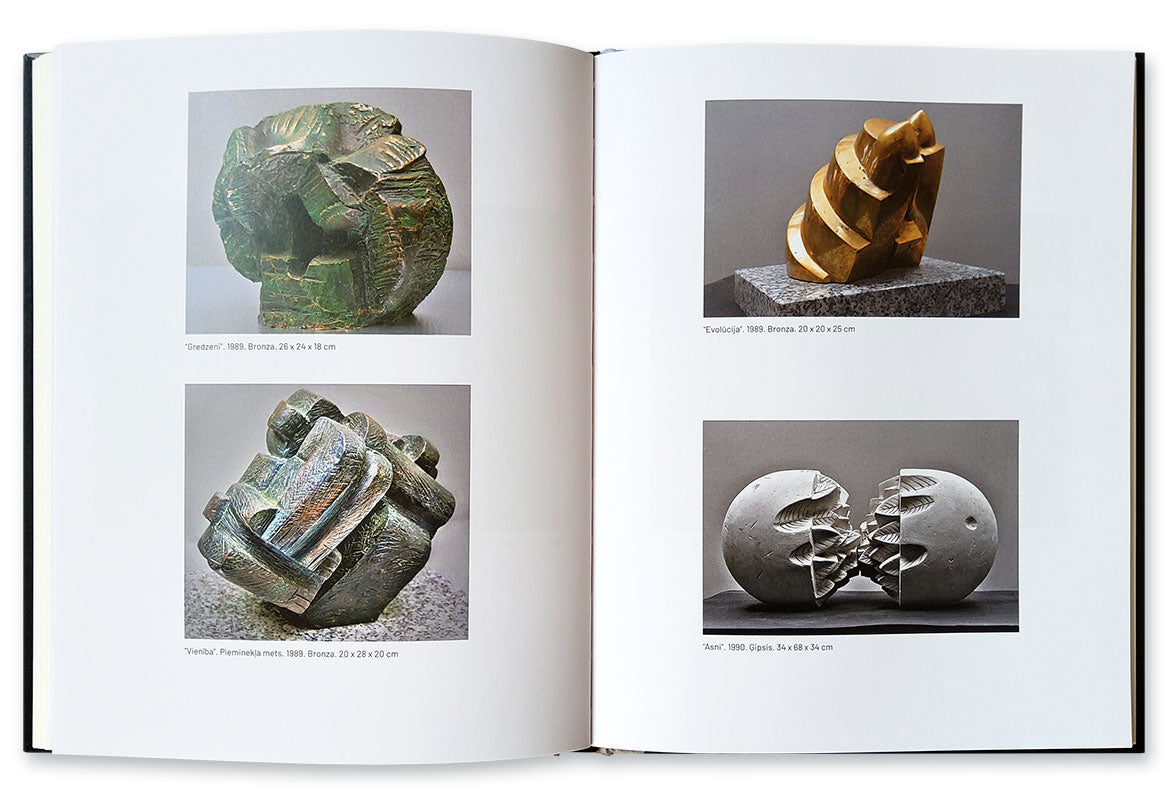
Dr. art. Ruta Čaupova's monograph on the sculptor Jānis Karlovs (1939) “Jānis Aivars Karlovs. The power of disobedience and construction in sculpture ”. Literary editor Cilda Redliha. Design: Brother Y.

In the research literature on our artistic phenomena, the evaluation of sculpture is left with orphan role. This is especially true of the generation of sculptors who still work side by side with us but whose years of power were spent in the Soviet system. As one of the small steps to fill this unfulfilled field, we are publishing a monograph by Ruta Čaupova on the sculptor Jānis Karlovs, an outstanding and unique sculpture specialist.

Jānis Karlovs is one of the brightest talents who has proven himself in the complex world of sculpture, which requires special strength, not only physical endurance. In addition, free monumental composition in the particularly unfavorable period of Soviet rule in Latvia. Karlov is a master of a strong compositional composition aimed at monumental sound. His strength is laconic, tightly charged formations, real lessons of sculpture in the expansion of mass tension and harmony. Their laconicism, the rhythmization of forms, borders on abstraction, but at the heart of the compositions we always feel the emotionality we have experienced - physically and mentally. His works have always been an event in the scene of our exhibitions, especially in the expositions of the international Riga Sculpture Quadrennials, as well as in the urban environment and landscape locations in Latvia and in the world, where they can still be found.

In the strictly supervised and pressed cultural environment of the Soviet era, along with some poets and other creative outcasts, the sculptor Jānis Karlovs proved his independent stance and spirit of resistance. It must be admitted that in Latvia, Karlov was almost the only one among sculptors who expressed his resistance and desire for freedom so directly, with such a return. Achieved an effective increase in the design principles previously developed by modern sculpture and the local school. He had been reporting since the late 1960s on the ripple of people and society that later erupted during the Awakening and the restoration of national independence.
Dr. art. Ruta Čaupova

Ruta Čaupova's monograph on Jānis Karlovs provides an insight into the artist's life; spent his childhood deported with his mother, brothers and sisters to Siberia; tells about the study time at the School of Applied Arts and the Academy of Arts, the teachers and situations encountered, and further creative activity, its principles and achievements. This book contains the widest possible information about Jānis Karlovs' works, which can be found both in Latvia and abroad, participating in international symposia and placing orders in many places abroad, where his work is especially appreciated.